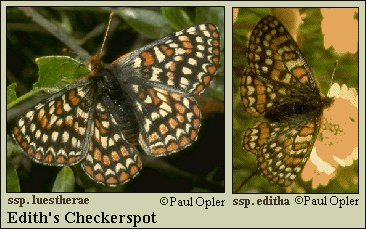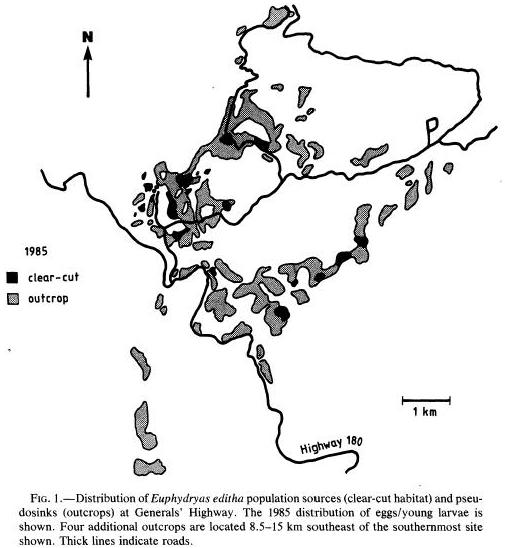

Cakile edula is a plant found in a range of coastal habitats stretching from open beaches to vegetated dunes.
In vegetated dunes, the plants are common but the
number of fruits per fruit sown is < 1.
Hence, these areas are sinks,
i.e., habitats in which populations cannot
survive when they are isolated from other habitats
(non-sustainable population).
On open beaches, the number of fruits per fruit
greatly exceed 1.
Hence, these areas are sources,
i.e., habitats where not only the population is sustainable
but from which migration can occur to populate other habitats.
Dunes are relatively constant environment but reproductive sucess is low - maybe due to competition with other plant species or lack of resources.
Open beaches are very productive habitats but reproductive success can be catastrophically reduced by storms and other high sea events.
In the long run, the plant should not be able to survive in either habitat - yet, it is a common species on the sea side of eastern North America.


In 1992 a severe summer frost killed the clear-cut area (the source) host plants for the butterflies.
As a result the butterfly larvae starved in clear-cuts and the source population became extinct.
The population in the rocky outcrops (the sink) survived this catastrophe but the population density decreased.
Other examples abound of species managing to survive in both source and sink habitats.
Proposed explanations of this phenomenon mainly centre around the concept of "spreading of risk".
But is that really the only explanation ?
We study this problem by modeling source and sink habitat
population dynamics using logistic maps with
trapping regions and coupling such
systems to each other.